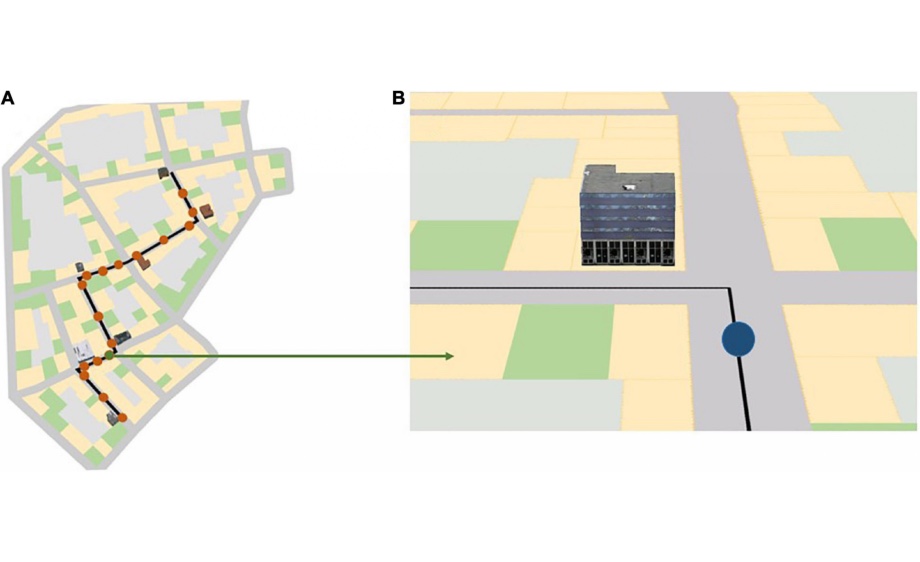Navigation auf uzh.ch
Navigation auf uzh.ch
Using spontaneous eye blink-related brain activity to investigate cognitive load during mobile map-assisted navigation
Frontiers in Neuroscience, Sec. Neural Technology, Volume 17 - 2023

Bingjie Cheng, Enru Lin, Anna Wunderlich, Klaus Gramann and Sara I. Fabrikant
Abstract
The continuous assessment of pedestrians’ cognitive load during a naturalistic mobile map-assisted navigation task is challenging because of limited experimental control over stimulus presentation, human-map-interactions, and other participant responses. To overcome this challenge, the present study takes advantage of navigators’ spontaneous eye blinks during navigation to serve as event markers in continuously recorded electroencephalography (EEG) data to assess cognitive load in a mobile map-assisted navigation task. We examined if and how displaying different numbers of landmarks (3 vs. 5 vs. 7) on mobile maps along a given route would influence navigators’ cognitive load during navigation in virtual urban environments. Cognitive load was assessed by the peak amplitudes of the blink-related fronto-central N2 and parieto-occipital P3. Our results show increased parieto-occipital P3 amplitude indicating higher cognitive load in the 7-landmark condition, compared to showing 3 or 5 landmarks. Our prior research already demonstrated that participants acquire more spatial knowledge in the 5- and 7-landmark conditions compared to the 3-landmark condition. Together with the current study, we find that showing 5 landmarks, compared to 3 or 7 landmarks, improved spatial learning without overtaxing cognitive load during navigation in different urban environments. Our findings also indicate a possible cognitive load spillover effect during map-assisted wayfinding whereby cognitive load during map viewing might have affected cognitive load during goal-directed locomotion in the environment or vice versa. Our research demonstrates that users’ cognitive load and spatial learning should be considered together when designing the display of future navigation aids and that navigators’ eye blinks can serve as useful event makers to parse continuous human brain dynamics reflecting cognitive load in naturalistic settings.